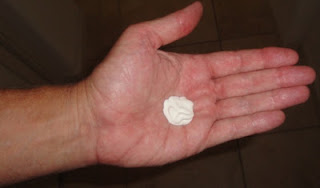Relocating
to Hawaii from the mainland requires so much planning, effort, and money that
we are alarmed when families leave the island in frustration after living here
just a short time. Two families in our condo complex just left, one after
two years and another only six months after completing a major move of all
their belongings. Watching people leave the island so quickly has made us
focus on how to flourish in Hawaii. Here are things we are doing to help
us live better:
Renting,
instead of buying, has allowed us to experience living in many parts of the
island over the past five years. Our desires in housing have changed
dramatically, as we have, over the years. At first we wanted a great view of
Hilo Bay, then we wanted to be closer to a white sand beach. As we
got into better shape we wanted to be near great walking and swimming areas and
cared less about the view. As we have focused more of our time on
writing, we want more quiet, solitude, and better security. For just the
cost of moving, we have freedom in recreating our lifestyle in a new location
whenever we desire.
Reducing
our cost of living, has kept us aware of opportunities on the island. We
have been lucky to get more for less in the current economy in Hawaii.
Reducing our monthly expenses has reduced our stress and brought more
workability to our life style. We have significantly cut our rent expenses by
timing our moves to the low season and identifying in advance where we wanted
to live next. We have cut back in other areas of our living expenses by
researching everything we buy and searching for the best prices. It may not
seem like a big deal to buy the best coffee maker or the best coffee grinder,
but year after year it adds up to a much more enjoyable life at a much lower
cost.
Getting
rid of stuff, gives us more space and peace of mind. We moved everything
we owned to Hawaii, and though we initially had to store many of our boxes, we
have had time to slowly sort through all our belongings and get rid of
things. Every year we need less space as we shrink the volume of stuff we
own.
Having
time has been a great gift to us. We have had time to research, think,
contemplate our life, and focus on our health. We have learned how to
deal with our health issues, like gout, and to make changes in what we eat to
lose weight and get healthier. Time has allowed us to learn how to cook
new foods and implement new diets, like going wheat-free.
Any
time we start to lose touch with how much better our life is on this island
compared to anywhere else we have ever lived, we head over to one of the nearby
resorts. We watch the sunset and listen to visitors from the mainland
exclaiming with wonder over the beauty. We watch furrowed faces of people
in hotel lobbies at the end of their vacation, waiting for their ride to the
airport, already stressed out, yelling in their cell phones about the problems
waiting for them when they arrive home. We know that what we appreciate in life
we get more of, so every day we focus on appreciating every aspect of
Hawaii that we love, no matter how small, so we will get many, many more years
of it!



































